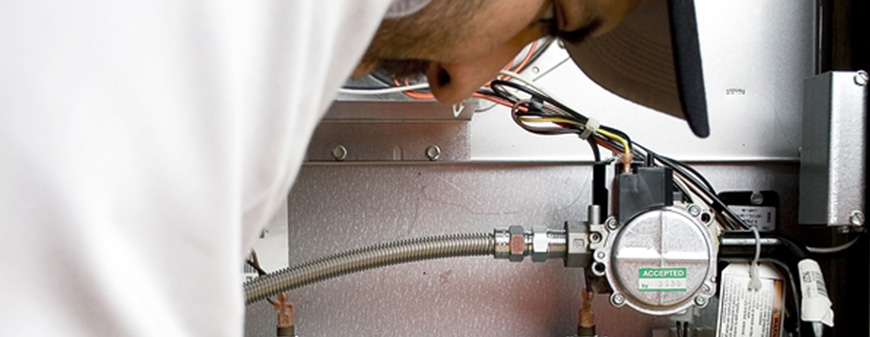RSI is a Great Training Option for Everyone
Learn more about how we can prepare you to advance your career.
Are you thinking about changing careers in 2019?
You’re not alone. Getting another job is one of the most common New Year’s resolutions people make.[1]
And two of the best ways to make resolutions stick is to be realistic about your goals and to make a plan for how to achieve them.[2]
Don’t have the time or resources for several years of college? Hate sitting at a desk all day? Then don’t go the traditional university route.
3 Career Paths to Jump Start Your Professional Life in 2019
Unlike many other professions, you can train for a career in the skilled trades within the year. That’s a pretty attainable goal, right?
Get Started on the Path to a New Career
Fill out our form to learn how we can help you change your life.
Even better, there’ll likely be plenty of jobs waiting for you after trade school. That’s because skilled trades positions are currently tough to fill in the U.S. and several other countries.[3]
See what these three careers could hold in store for you and how to land them.
Welder

Want to travel the world fusing the strong metal joints for everything from skyscrapers to cruise ships to jetliners? You could as welder.
There are also plenty of exciting opportunities right here at home in the manufacturing and construction industries and, for those with advanced training, NASA and NASCAR.[4]
| Welder Definition | Welders, cutters, solderers and brazers use remote-controlled or hand-held equipment to cut or join metal parts. They may also fill seams, holes and indentations in metal products. |
Welder Career Snapshot
Job growth through 2026: 6 percent (as fast as average).[5]
Benefits: Active work and flexible schedule.[5]
Training time to entry-level work: As short as 7 months.[6]
So, how do you become a welder and make it a successful career? Below are the general steps that many take to this career:
Step 1: Get your high school diploma or GED.
Step 2: Complete a welding program at a trade school.
Step 3: Land a job and receive employer training.
Step 4: Earn welding certifications to demonstrate skills and knowledge.[7]
With over 67 welding processes to choose from, you’ll likely be able to apply your new welding skills to applications across a multitude of industries.
HVAC Technician

It can be difficult to see the impact of your work on people’s lives when you’re pushing paper or clicking away at a computer all day. If you want a job that often leaves customers smiling, think about becoming an HVAC technician.
These pros get the A/C back up and running on sweltering summer days and come to the rescue when the furnace sputters out in the dead of winter.
| HVAC Technician Definition | Heating, air conditioning and refrigeration mechanics and installers service heating, ventilation, air conditioning and refrigeration systems that control the air quality and temperature in buildings.[8] |
A typical day in the life of an HVAC technician can involve installing new heating systems, repairing air conditioners or maintaining refrigeration and ventilation equipment.
HVAC Technician Career Snapshot
Job growth through 20206: 15 percent (much faster than average).[8]
Benefits: Variety of work sites and job security.[8]
Training time to entry-level work: As short as 6 months.[9]
What are the steps to take to enter the HVAC industry? Here is a path many people travel to this career.
Step 1: Earn your GED or high school diploma.
Step 2: Graduate from an HVAC Training program at a vocational school.
Step 3: Obtain EPA Section 608 technician certification if working with refrigerants.
Step 4: Become licensed if it’s required in the state of residence.
Step 5: Start working in the field.
Step 6: Test for industry certifications to advance your career.[10]
Within the year, you could complete your HVAC program and enter the field. By this time next year, you could be making New Year’s resolutions to climb the HVAC career ladder.
Electrician

Electricians play a vital role in making sure cities and towns run smoothly. They literally keep the lights on.
It’s active work that takes them to various job environments throughout the day. Some electricians even travel long-distance to perform their job duties.[11]
| Electrician Definition | Electricians install, repair and maintain communications, electrical power, control and lighting systems.[12] |
If you choose this trade, you could follow in the footsteps of great minds like Albert Einstein and Alfred Hitchcock.
Electrician Career Snapshot
Job growth through 2026: 9 percent (as fast as average).[11]
Benefits: Active work, opportunities to work outdoors and for self-employment.[11]
Training time to entry-level work: As short as 7 months.[13]
What does it take to become a licensed electrician? The steps outlined below are a common path to the trade.
Step 1: Finish high school or get your GED.
Step 2: Learn electricity basics and the National Electric Code in an electrician training program.
Step 3: Complete an apprenticeship program.
Step 4: Pass your state’s electrician licensing test.
Step 5: Get a job as a journeyman electrician.
Step 6: Take continuing education courses to keep your license current.[14]
While it will take longer than a year to complete the apprenticeship, as little as 3 months of electrical technologies training at a trade school can equip you with the basic knowledge for entry-level jobs as a new construction or maintenance electrician.
A New Career Is Within Your Reach in 2019
These skilled trades careers typically have much shorter training times than the traditional university route, so it’s possible to prepare for and start working in them within the year. If your New Year’s Resolution is to start a new career in 2019, you can likely make it happen as a welder, HVAC technician or electrician.
Additional Sources
[1] https://www.inc.com/peter-economy/10-top-new-years-resolutions-for-success-happiness-in-2019.html
[2] https://www.nbcnews.com/better/pop-culture/how-make-your-new-year-s-resolution-stick-according-psychologists-ncna950006
[3] https://www.washingtonpost.com/realestate/when-expert-tradespeople-are-hard-to-find/2018/04/18/f668d874-2d4b-11e8-8688-e053ba58f1e4_story.html?noredirect=on&utm_term=.955e6995d780
[4] https://www.bls.gov/ooh/production/welders-cutters-solderers-and-brazers.htm
[5] https://www.bls.gov/ooh/production/welders-cutters-solderers-and-brazers.htm#tab-1
[6] https://www.rsi.edu/programs/welding-specialist/
[7] https://www.bls.gov/ooh/production/welders-cutters-solderers-and-brazers.htm#tab-4
[8] https://www.bls.gov/ooh/installation-maintenance-and-repair/heating-air-conditioning-and-refrigeration-mechanics-and-installers.htm#tab-1
[9] https://www.rsi.edu/programs/refrigeration-technologies/
[10] https://www.bls.gov/ooh/installation-maintenance-and-repair/heating-air-conditioning-and-refrigeration-mechanics-and-installers.htm#tab-4
[11] https://www.bls.gov/ooh/construction-and-extraction/electricians.htm#tab-3
[12] https://www.bls.gov/ooh/construction-and-extraction/electricians.htm
[13] https://www.rsi.edu/programs/electrical-applications/
[14] https://www.bls.gov/ooh/construction-and-extraction/electricians.htm#tab-4
This blog has been labeled as archived as it may no longer contain the most up-to-date data. For a list of all current blog posts, please visit our blog homepage at https://www.rsi.edu/blog/




